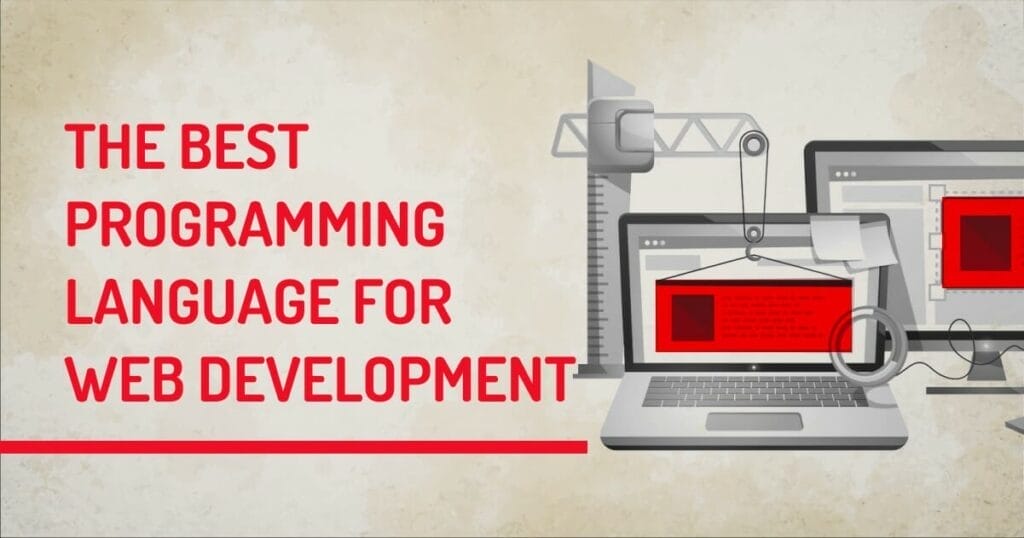
Home » Web Design » Which Is The Best Programming Language For Web Development In 2025
Web development is about developing a website for the Internet or an intranet. It can range from creating a single page of simple text to complex web-based applications, electronic businesses, and social network services. Many programming languages can be used in web development, but some are better. This article will let you know which language is best for web development.
What is a Programming Language?
A programming language is a formal language that specifies a set of instructions that can be used to produce various kinds of output. Programming languages are used in computer programming to implement algorithms. Most programming languages consist of instructions for computers. Many programming languages include BASIC, C, C++, FORTRAN, Java, Python, and Ruby on Rails. While there are many different programming languages, they all share some common features, such as the ability to control the order of execution of program instructions and to manipulate data types.
Types of Programming Language for Web Development in 2025: Different Types of Web Developers

Different programming languages are suited to various tasks. Some languages are low-level, meaning they give the programmer control over the machine and are close to the native language that the machine understands. These low-level languages are often used for system programming or writing programs that need to interface directly with the hardware.
Other languages are high-level, meaning they abstract away from the details of the underlying machine. These languages are easier to use and are suited for writing general-purpose web pages and software development.
There are also a variety of specialized programming languages designed for specific tasks. For example, scripting and coding languages are designed for creating web applications or statistical analysis. There is even a language that was designed just for developing games!
Front-end Development
Front-end development converts data into a graphical interface, typically using HTML, CSS, and JavaScript. It is one of the key areas of web development.
While front-end developers work on the visual appearance of the website, they also need to ensure that the site is easy to use and navigate. In addition, front-end developers must be able to code in multiple programming languages and have a strong understanding of web standards.
If you’re interested in pursuing a career in front-end development, a few things you should know. First, it’s important to have strong problem-solving skills. Second, you need to be comfortable working with code. And third, you should be able to adapt to change quickly.
Back-end Development
Back-end development is the process of building and maintaining the technological infrastructure of a website or application. This can include anything from server management to database design and security. For many businesses, back-end development is an essential part of their online presence. A well-designed and well-functioning back end can mean the difference between a successful website or app and one that doesn’t meet user needs.
Few things to keep in mind when planning back-end development for a new website or app. First, it’s important to choose the right technology stack for the project. This will ensure that the project can be built quickly and easily maintained over time. Second, it’s important to consider scalability from the outset. This means how the site or app will grow and change as users’ needs evolve.
Full-stack Development
Full-stack development is a term that describes a type of web development where the developer works on both the front-end and back-end of a website. Full-stack developers are usually well-versed in multiple programming languages, databases, and web servers.
The term “full stack” was first coined by American programmer Jeff Dickey in 2009. He used it to describe the growing trend of web developers becoming proficient in front-end and back-end development.
Since then, full-stack development has become one of the most sought-after skills in the tech industry. Companies are looking for developers who build websites as well as maintain and improve them.
Top 5 programming languages for web development : ( Backend Developers )
For backend development, it can be difficult to keep track of which language is best. However, a few languages stand out and have consistently remained popular among developers. These top backend web development languages are perfect for creating dynamic and robust web applications.
1. Python
Python is a versatile language that helps developers build scalable web applications. It is a high-level, interpreted language with an easy-to-read syntax. Python is perfect for prototyping and rapid development.
Python is easy to learn for beginners and has a gentle learning curve. The language is also very readable and concise, which makes it easy to maintain codebases.
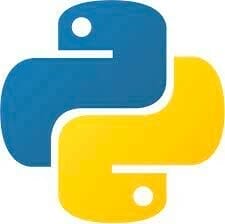
Python is fast becoming the most popular programming language in the world, and its popularity is only increasing. The language is very versatile and can be used for various tasks.
Using Python, one can create a robust architecture for the web application. Django is a Python web framework for quickly building quality web applications. Django comes with batteries included, allowing developers to focus on building their apps without the underlying infrastructure.
Our technical experts can help fix any issue you are having with your website, regardless of its complexity.
Flask is another popular Python web framework that is lightweight and easy to get started with. Flask provides flexibility and lets developers choose the right tools for their projects.
2. PHP
PHP has been around since 1995 and is used by some of the biggest websites in the world, including Facebook, WordPress, and Wikipedia. It’s a versatile language that can be used for everything from small personal projects to large enterprise applications.
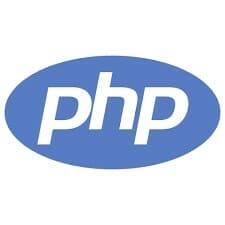
To start backend web development, PHP is a great language to learn. It’s easy to start with, has a large community of developers, and many frameworks and libraries available to help speed up development time. Stack Overflow is filled with questions and their solution for PHP.
PHP is a backend web development language used on millions of websites and applications. PHP is easy to learn and use, making it a popular choice for many developers. PHP is also constantly updated, with new features and capabilities added regularly.
3. Java
Java is a versatile language that can be used to build a range of applications, from lightweight mobile apps to large enterprise systems. Java is also popular for backend web development due to its stability and performance.
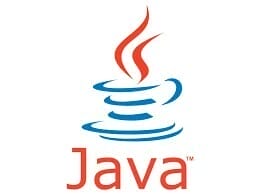
Java is a versatile and powerful programming language that enables developers to create robust, high-performance applications. Java is platform-independent, meaning it runs on any operating system. Using Java, one can create various systems, including web applications, mobile apps, desktop applications, and more.
4. C#
C# has been around for decades and is still one of the most popular languages today. C# is a very versatile language. It can be used for low-level systems programming as well as high-level application development. This makes it a good choice for various projects, including game development. Not to mention Unity, a huge engine using C# for developing games.
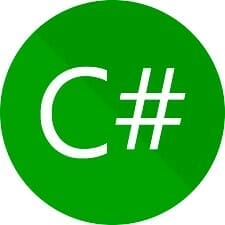
C# has excellent performance. It is a compiled language, it is converted directly into machine code before it is executed. This makes programs written in C much faster than interpreted languages like Python or JavaScript. Also, C# has a large and active community behind it. C# programs are efficient and portable, making them ideal for various applications.
5. JavaScript
Wait. What? Isn’t it a front-end language?
JavaScript is a powerful programming language that has become essential for modern web app development. It is key for both frontend and backend development, as it can create dynamic, interactive user experiences on the client side and robust applications on the server side.
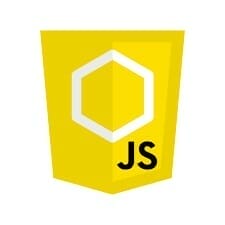
The most popular framework for JavaScript backend development is Node.js. This open-source runtime environment allows developers to use JavaScript to handle requests from the web browser, interact with databases, and generate dynamic content based on user input. Node.js provides an efficient way to develop data-driven applications quickly and cost-effectively. It also enables full-stack developers to unify their codebase across both the frontend and backend of their projects, leveraging all the benefits of a single programming language.
Popular Programming Languages : ( Frontend Developers )
Frontend web development languages are used to create the user interface and visual layout. There are many front-end web development languages to choose from. The best language for you will depend on your specific needs and preferences. Each language has its unique benefits and drawbacks. Choosing the right language can be a daunting task, but luckily, plenty of resources are available to help you make the best decision for your project.
1. JavaScript ( The Only Language Browser Understands )
JavaScript is a versatile scripting language used in many websites and web applications to add interactivity and dynamic content. It is also used for some desktop applications, such as Adobe Photoshop. JavaScript was introduced in 1995 by Brendan Eich while working for Netscape Communications. Netscape Navigator 2.0, released in 1996, was the first browser to support JavaScript. Today, all major browsers support JavaScript.

JavaScript is considered a weakly typed or untyped language because it does not have explicit data types. This means a variable can hold data without declaring a specific data type. However, this flexibility can lead to errors if variables are not used properly. JavaScript is an interpreted language, which means that code is not compiled before it is run. Instead, code is interpreted by a JavaScript engine as it executes.
2. ReactJS (JavaScript Library )
ReactJS is a JavaScript library for building user interfaces. It is declarative, efficient, and flexible. ReactJS lets you create reusable UI components. ReactJS creates complex UIs easily.. ReactJS is fast because it uses a virtual DOM. This means that the browser doesn’t have to re-render the whole page when a user interacts with a React component.

ReactJS is a popular choice for web development because it makes code easy to read and debug. The library also helps to keep code consistent across different browsers.
3. AngularJS (JavaScript Framework )
AngularJS is a structural framework for dynamic web apps. It lets you use HTML as your template language and extend HTML syntax to express your application’s components clearly and succinctly. AngularJS’s data binding and dependency injection eliminate much of the code you would otherwise have to write. And it all happens within the browser, making it an ideal partner with any server technology.

AngularJS framework makes web development simpler and faster. With AngularJS, developers can create single-page, responsive, and dynamic applications. AngularJS is a popular framework for front-end web development and is used by many top companies.
4. VueJS (JavaScript Progressive Framework)
VueJS may be relatively new, but this powerful JavaScript framework is already making waves in the web development community. VueJS combines the best features of other frameworks to create a fast, lightweight platform that is easy to use and perfect for developing sophisticated single-page applications.

Whether you’re looking for a simple way to add interactivity to your website or you need a comprehensive solution for building complex client-side applications, VueJS has you covered. With its intuitive syntax and flexible API, VueJS is quickly becoming one of the most popular choices for front-end development.
Our technical experts can help fix any issue you are having with your website, regardless of its complexity.
Haha… They’re all descendants of a single language. So, mastering only one language – JavaScript can make you a full-stack web developer.
Why do Some Programming Languages Work Better than Others
Different programming languages are better equipped to handle different types of tasks. Some languages are designed to be more user-friendly, while others focus on more complex processes. When deciding which language to learn, it is important to consider what type of programming you want to do. Learning a language like HTML would be a good choice if you want to create simple websites. The best language to use depends on the needs of the programmer.
Find the Best Web Development Languages to learn
Web development languages are constantly changing and evolving. What was popular last year, maybe completely different this year? So, how do you know which web development languages to learn? Here are a few tips to help you find the best web development languages to learn:
1. Do your research – spend some time looking into which languages are most popular and in demand.
2. Consider your goals – what do you want to achieve by learning a new language?
3. Identify which language will be most beneficial for the type of development you want to do. If you want to build websites, for example, you’ll need to learn HTML, CSS, and JavaScript.




